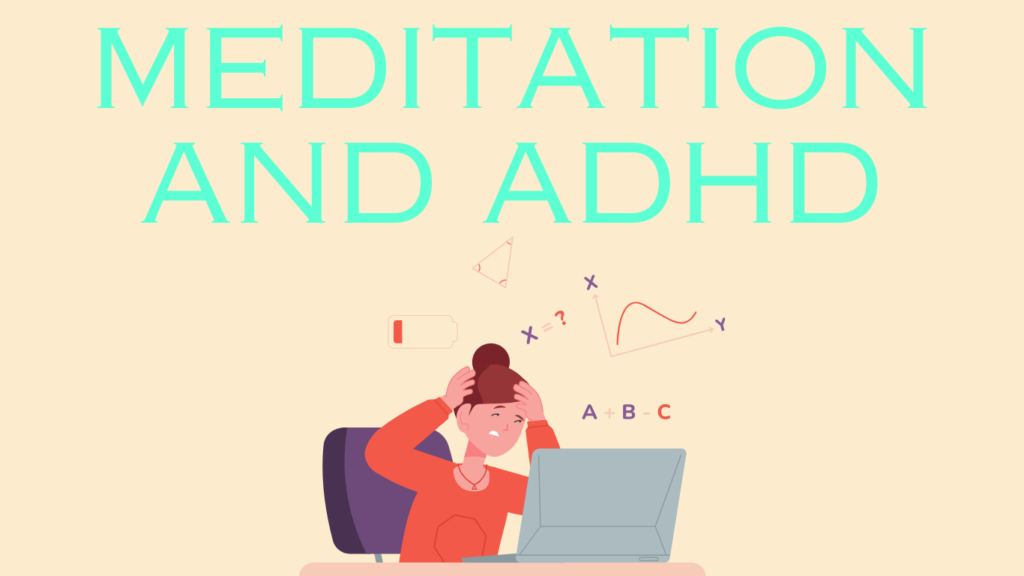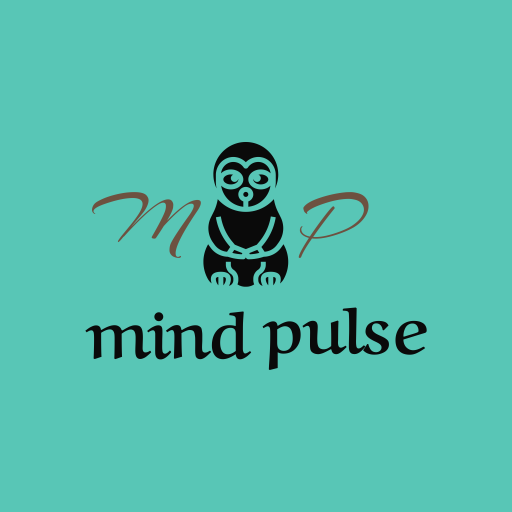Meditation and ADHD: How Meditation Can Help A Calmer Mind in a Noisy World

ADHD (Attention-Deficit/Hyperactivity Disorder) is often described as a whirlwind of thoughts, distractions, and impulsive actions. For many people, the struggle to focus or stay still feels like a constant uphill battle.
But what if one of the most helpful tools in managing ADHD symptoms and treating ADHD wasn’t a new app, therapy, or medication—but simply sitting in stillness?
Table of Contents
Understanding Attention Deficit Hyperactivity Disorder (ADHD)
Attention Deficit Hyperactivity Disorder (ADHD) is a neurodevelopmental disorder characterized by symptoms of inattention, hyperactivity, and impulsivity. It’s a chronic condition that affects both children and adults, impacting their daily lives, relationships, and overall well-being. ADHD is not a result of poor parenting, lack of intelligence, or poor motivation.
Instead, it stems from a complex interplay of genetic, environmental, and neurological factors. Understanding ADHD is crucial for developing effective treatment strategies, including mindfulness meditation training.
By recognizing the underlying causes and manifestations of ADHD, we can better tailor mindfulness practices to help manage its symptoms and improve quality of life.
What Is Mindfulness Meditation, Really?
Meditation isn’t about emptying your mind or achieving perfect peace. It’s about awareness—noticing your thoughts, feelings, and surroundings without judgment. It can involve breathing exercises, mindfulness techniques, body scans, or simply sitting in silence for a few minutes.
For people with ADHD, this may sound nearly impossible at first due to the wandering mind—but that’s exactly why it can be so effective. Mindfulness practices can help individuals bring their attention back to the present moment, thereby improving focus and emotional awareness.
The ADHD Brain and Meditation
ADHD brains are often in overdrive. They crave stimulation, jump between thoughts, and have difficulty pausing or filtering out distractions. Meditation can offer a kind of mental “gym” to train the brain to slow down, notice distractions without reacting, and build up focus over time.
Additionally, mindfulness meditation is thought to enhance the thickness of the prefrontal cortex, a brain region essential for focus, planning, and impulse control, thereby improving attentional regulation and emotional management for individuals with ADHD.
Research Backs It Up
Studies have shown that mindfulness meditation can:
- Improve attention and reduce distractibility
- Decrease impulsivity and hyperactivity
- Lower anxiety and emotional reactivity
- Increase working memory and executive functioning
In fact, mindfulness-based interventions are now commonly recommended as a complementary approach to ADHD treatment. There is also current empirical support for the effectiveness of mindfulness meditation in treating ADHD, highlighting its potential as a viable treatment option.
How Does It Work?
Here’s how meditation directly supports ADHD management:
Consistent mindfulness practice is crucial in managing ADHD symptoms, as it helps integrate mindfulness into daily activities, thereby enhancing awareness and encouraging behavioral change.
Improves Focus and Attention
Mindfulness teaches the skill of returning—you notice your attention drifting, and gently bring it back. Doing this over and over (without judgment) strengthens your attention muscle.
Improved focus through meditation can aid in task completion for individuals with ADHD, helping them overcome challenges related to focus and organization.
Reduces Emotional Reactivity and ADHD Symptoms
People with ADHD often feel emotions intensely. Meditation builds emotional regulation by increasing awareness of feelings before they spiral out of control.
Additionally, meditation helps manage emotion dysregulation in individuals with ADHD by providing tools to strengthen their ability to regulate emotions effectively.
Calms the Nervous System
Deep breathing and stillness activate the parasympathetic nervous system (the “rest and digest” mode), countering the hyper-arousal often seen in ADHD.
Meditation can also help manage hyperactive impulsive symptoms in individuals with ADHD by reducing restlessness, talkativeness, and impulsivity.
Builds Self-Awareness
Becoming more aware of thoughts and behaviors helps people with ADHD catch themselves in moments of impulsivity or distraction—and make better choices.
Additionally, meditation fosters self acceptance in individuals with ADHD by promoting a non-judgmental awareness of their thoughts and experiences, which helps counter negative automatic thinking patterns.
Meditation Techniques for ADHD
Meditation techniques for ADHD aim to improve attention, reduce impulsivity, and enhance self-regulation. Mindfulness meditation, in particular, has shown promise in reducing ADHD symptoms.
This technique involves paying attention to the present moment without judgment or distraction, helping individuals with ADHD to anchor their wandering minds. Other meditation techniques, such as loving-kindness meditation, transcendental meditation, and movement meditation, can also be beneficial.
Loving-kindness meditation fosters self-compassion and emotional regulation, while transcendental meditation offers deep relaxation through the repetition of a mantra. Movement meditation, like yoga or tai chi, combines physical activity with mindful awareness, making it easier for those who find sitting still challenging. These techniques can be adapted to individual needs and preferences, making them a flexible and effective tool for managing ADHD symptoms.
Meditation Training for ADHD
Meditation training for ADHD typically involves a combination of mindfulness meditation, education, and support. Programs may include guided meditations, group discussions, and at-home practice.
The goal of meditation training is to help individuals with ADHD develop greater awareness of their thoughts, feelings, and behaviors, and to improve their ability to regulate their attention and impulses. Guided meditations provide structure and support, making it easier to stay focused.
Group discussions offer a sense of community and shared experience, while at-home practice allows for flexibility and consistency. By tailoring meditation training to individual needs, including age, severity of symptoms, and co-occurring conditions, we can create a supportive environment that fosters significant improvements in managing ADHD.
Getting Started: Meditation Tips for ADHD
Meditation doesn’t have to mean sitting still for an hour. Start small:
- Start with 2–5 minutes a day. Even one minute of conscious breathing can be powerful.
- Use guided meditations. Apps like Headspace, Calm, or Insight Timer are ADHD-friendly.
- Try active forms of meditation. Walking meditations, mindful eating, or yoga can help if sitting still feels too difficult.
- Start with short sitting meditation sessions. Begin with 5-15 minutes to accommodate restlessness and difficulty maintaining attention.
- Be kind to yourself. Your mind will wander. That’s okay. Every time you return, you’re practicing the skill.
Future Directions for Meditation and ADHD Research
Future research on meditation and ADHD should focus on several key areas. First, the development of standardized meditation protocols will ensure consistency and reliability in studies.
Investigating the brain mechanisms underlying meditation’s effects on ADHD can provide insights into how these practices influence cognitive function and emotional regulation. Additionally, examining meditation’s impact on ADHD symptoms in different populations, such as children, adults, and individuals with co-occurring conditions, will help tailor interventions more effectively.
Research should also explore the potential benefits of combining meditation with other treatments, such as medication and cognitive-behavioral therapy, to provide a comprehensive approach to managing ADHD. By advancing our understanding of meditation’s effects on ADHD, we can develop more effective treatments and improve the lives of individuals affected by this condition.
Conclusion
Meditation isn’t a magic fix—but it can be a powerful tool. It helps slow the whirlwind, one breath at a time. For people with ADHD, meditation offers something incredibly valuable: a moment of pause in a fast-paced mind.
Whether you stick with it for five days or five years, the benefits can ripple into every part of your life—focus, mood, relationships, work. It’s a small practice with big impact. Integrating mindfulness into everyday life can further enhance these benefits, making it easier to stay present and let go of distractions.
So if you’ve got a racing mind, give meditation a try. You might be surprised how quiet things can get.

